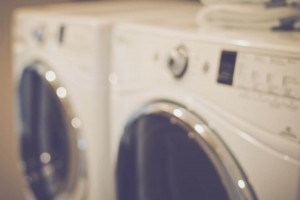Washing Machines
Most washing machines allow you to select a temperature (cold, cool, warm or hot) as well as a load size (small, medium, large or extra large). In addition to these basic settings, modern machines provide different cycle options.
Delicates: Uses cold water and spins slower to preserve fragile, lightweight fabrics.
Extra Rinse: Adds a second rinse to ensure no residual detergent survives.
Hand Wash: Soaks garments for extended periods and gently rotates them.
Heavy Duty: Tumbles faster and more aggressively to thoroughly clean highly soiled clothes.
Permanent Press: Uses warm water and spins slower than usual to prevent wrinkles from forming.
Pre-Wash: Soaks the clothing before the main cycle.
Quick Wash: Spins quickly to wash lightly soiled items faster.
Rinse and Spin: Cycles without detergent.
Dryers
Dryers are typically less flexible regarding temperature and load size. Sometimes, you’ll find a low-heat setting, but more often the primary control determines dryness (less dry, normal, very dry, etc.). That said, here are a few more options you might find on commercial dryers.
Air Dry: Blows cool air into the dryer.
Delicates: Uses a short, low-heat cycle.
Extended Tumble: Continues tumbling without heat after drying the clothes to prevent wrinkles.
Heavy Duty: Uses high heats to dry heavy fabrics like towels and jeans more effectively.
Manual Dry: Programs the length of the cycle.
Permanent Press: Uses low heat and a gentle tumble to prevent creasing. It also introduces a cool-down period to stop wrinkles from forming after the cycle.
Quick Dry: Uses high heat to reduce the length of the cycle.

